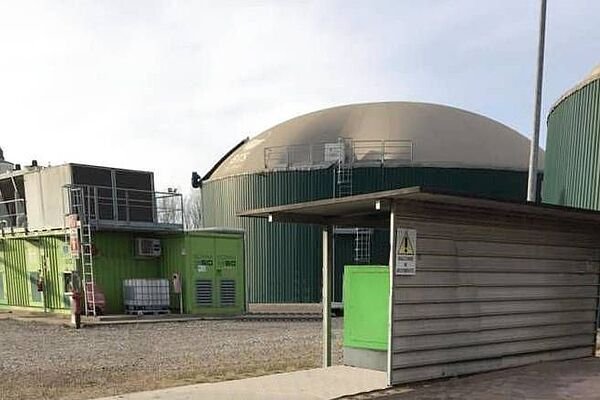PreMix®: Optimizes solids treatment and increases gas production
Case study: Az. Agr. Ronconi Giacomo, Italy
Problem
High maintenance costs and malfunctions caused by long-fiber solids in the digester.
Solution
PreMix: reliably mashes, shreds, homogenizes and conveys solids into the digester.
The customer and the problem
The Italian agricultural business with around 130,000 pigs and 2,000 dairy cows operates two biogas plants, each with a capacity of 1 MW. Both plants are fed with the same input materials: slurry, cattle manure, process water from the farm, and a small amount of silage.
The two biogas plants differ fundamentally in their feeding systems. In the first plant, a vertical mixer with a screw conveyor fed the solids directly into the digester. However, this system led to frequent problems: the digester had to be opened almost monthly and the mixers removed in order to remove ropes, fibers and other long-fiber materials that blocked the mixers. The workload was high and the mixers required a lot of energy to mix the suspension in the digester thoroughly. In addition layers formed, which impaired the gas yield.
The solution
For the second plant, operator Giovanni Ronconi opted for the Vogelsang PreMix. A screw conveyor feeds the solids directly into the PreMix. There, they are mashed with digestate or slurry to form a homogeneous suspension, coarse and long-fiber components are crushed, heavy material is separated out in a single step, before being fed into the digster.
After more than two years of operation, Ronconi was able to compare the two systems in detail. The system with PreMix impresses with less work, fewer malfunctions, and greater process stability. While the digester had to be cleaned regularly with the vertical mixer, this was not necessary at all with PreMix. Maintenance is minimal – so far, only the cutter screen and blades of the cutter have had to be replaced, while the pump itself has continued to run without any problems. In addition, the liquid feeding system prevents the formation of layers and contributes to a better gas yield. This reduces the amount of feed required each day without affecting daily production output. Finally, the PreMix requires less energy than the vertical mixer and reduces the energy requirements of the mixers, which no longer have to struggle with long-fiber components.

Advantages
- Mashing of the biomass to form a suspension that is optimal for bacteria
- Shredding of coarse and fibrous components and separation of heavy materials in a single step
- Simple and fast service directly on site
Benefits for the user
- Significantly lower costs for the maintenance of digesters and mixers
- Prevention of layers in the digester
- Lower energy consumption of the feeding system and mixers
- Less feedstock required while maintaining the same gas production